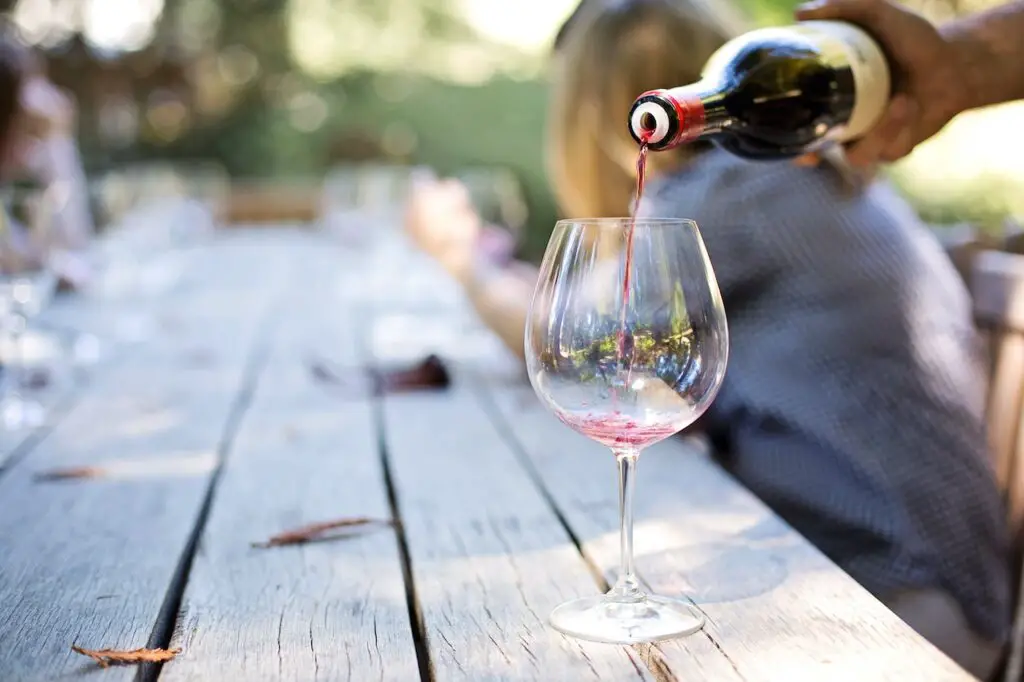Wine is a timeless beverage that has been enjoyed for centuries. Whether you’re a seasoned connoisseur or a novice wine enthusiast, understanding the art of choosing, tasting, and pairing wine can greatly enhance your overall experience. In this article, we will provide a comprehensive guide for gentlemen who wish to delve into the world of wine.
Exploring the world of wine
Exploring the world of wine is a captivating journey that opens doors to a vast realm of flavors, aromas, and traditions. With its rich history dating back centuries, wine has become an integral part of various cultures worldwide. Embarking on this adventure allows you to delve into the vineyards nestled in picturesque landscapes and discover the intricate process of winemaking.
As you explore the world of wine, you will encounter an array of grape varieties, each with its unique characteristics and profiles. From the robust and velvety red wines to the crisp and refreshing whites, there is a wine to suit every palate and occasion.
Moreover, the exploration extends beyond the taste. Wine is intertwined with the culture and heritage of the regions where it is produced. Each sip tells a story, reflecting the climate, soil, and winemaking traditions of the specific terroir.
Related: Mastering the Dinner Date: Tips for Impressing Your Partner

The basics of choosing wine
The basics of choosing wine encompass a multifaceted process that involves understanding various factors to make an informed selection. It begins with acquainting oneself with the different wine types available, such as red, white, rosé, and sparkling. Each type boasts its own unique characteristics, ranging from bold and robust flavors to crisp and refreshing profiles.
However, personal preferences play a vital role in the decision-making process. Exploring and understanding one’s own taste preferences can guide the selection towards wines that align with individual likes and dislikes. Some individuals may gravitate towards full-bodied red wines with rich tannins, while others may prefer the lighter and fruitier notes of white or rosé wines.
Moreover, delving deeper into the world of wine involves exploring various wine regions and vineyards. Each region has its own distinct terroir, which influences the flavors and characteristics of the wines produced there. Whether it’s the elegant and nuanced wines of Burgundy or the bold and powerful wines of the Napa Valley, exploring different regions can unveil new and exciting flavor profiles.
Additionally, understanding labels and wine descriptions can be beneficial when choosing a bottle. Labels often provide information about the grape variety, region, vintage, and sometimes even tasting notes. Familiarizing oneself with the key elements of wine labels can help navigate the vast array of options and make more informed decisions.
Related: 9 Fine Dining Etiquette Rules Every Gentleman Should Follow

Mastering wine tasting
Mastering wine tasting is an art form that allows you to unlock the full sensory experience of wine. By following a systematic approach and honing your senses, you can delve deeper into the intricacies and complexities of each glass. The journey begins with the visual examination, where you observe the color, clarity, and viscosity of the wine. Swirling the wine gently in the glass releases its aromas, allowing you to evaluate its bouquet.
Take note of any fruity, floral, or oaky scents that waft from the glass. Finally, when tasting the wine, pay attention to its flavor profile, acidity, tannins, and finish. Analyzing these elements provides insight into the structure, balance, and overall quality of the wine. With practice and patience, you can develop a discerning palate and confidently navigate the world of wine tasting.
The art of wine pairing
The art of wine pairing is a harmonious dance between flavors, where the right combination can elevate both the food and the wine to new heights. It involves a careful consideration of the characteristics of both the dish and the wine to create a synergistic union on the palate.
When pairing wine with food, it’s essential to take into account the intensity, richness, and complexity of both components. Light-bodied wines tend to pair well with delicate dishes, allowing the flavors of the food to shine through. On the other hand, robust and full-bodied wines can complement heartier and more flavorful dishes, matching their intensity.
A successful wine pairing takes into consideration the flavors, textures, and aromas present in both the food and the wine. Complementary flavors can enhance each other, creating a delightful balance. For example, a crisp and acidic white wine can cut through the richness of creamy dishes, while a fruity red wine can complement the flavors of grilled meats.
Textural harmony is another important aspect of wine pairing. Pairing wines with similar textures to the food can create a seamless and cohesive dining experience. For instance, a silky and velvety red wine can complement the smoothness of a chocolate dessert, while a sparkling wine with its effervescence can refresh the palate when paired with lighter appetizers.
Related: Embracing Silent Sophistication: The Gentleman’s Guide to Sublime Luxury

Wine etiquette and serving tips
Wine etiquette and serving tips are essential to ensure that the wine is enjoyed to its fullest potential and that the experience is both enjoyable and memorable. From proper storage to serving techniques, these guidelines contribute to enhancing the taste and presentation of the wine.
First and foremost, the storage of wine is crucial to maintaining its quality. Wine should be stored in a cool, dark place, away from direct sunlight and extreme temperature fluctuations. Excessive heat can accelerate the aging process and spoil the flavors, while extreme cold can freeze the wine and cause it to expand, potentially damaging the bottle. By providing the ideal storage conditions, you can preserve the integrity and character of the wine over time.
When it comes to serving wine, temperature plays a vital role. Each type of wine has an optimal serving temperature that allows its flavors and aromas to shine. Red wines are typically served slightly below room temperature, while white wines and rosés are best served chilled. Sparkling wines benefit from being served well chilled to enhance their effervescence and crispness. By serving the wine at the appropriate temperature, you can fully appreciate its nuances and complexities.
Decanting is another technique that can enhance the enjoyment of certain wines. This process involves transferring the wine from the bottle to a decanter, allowing it to breathe and develop. Decanting is particularly beneficial for young red wines with robust tannins, as it softens the structure and enhances the aromas. It is also useful for separating older wines from any sediment that may have formed over time. By decanting the wine, you can unlock its full potential and ensure a more pleasurable tasting experience.
Proper glassware is essential for serving wine. Different types of wine require specific glass shapes to enhance their aromas and flavors. Red wines are typically served in glasses with larger bowls and wider openings, allowing for aeration and the release of aromas. White wines and rosés are best enjoyed in glasses with smaller bowls and narrower openings, preserving their delicate aromatics. Sparkling wines are traditionally served in tall, slender flutes or tulip-shaped glasses, which help retain the bubbles and showcase their effervescence.
When pouring wine, it is advisable to hold the bottle by the base or the stem rather than the neck. This helps prevent the heat from your hands from warming the wine. Pouring should be done gently, allowing the wine to cascade down the side of the glass to minimize splashing and preserve the wine’s aromas and flavors.
Related: Stepping in Style: The Ultimate Guide to Prada Men’s Loafers

Building your wine collection
Building your wine collection can be an exciting and rewarding endeavor that allows you to curate a selection of wines tailored to your taste preferences and interests. Whether you are a wine enthusiast or a budding connoisseur, building a collection requires careful thought, exploration, and a long-term perspective.
One of the first steps in building a wine collection is determining your goals and preferences. Consider what types of wines you enjoy the most, whether it’s red, white, rosé, or sparkling. Think about the regions and grape varieties that intrigue you and align with your taste profile. This self-reflection will help guide your purchasing decisions and ensure that your collection reflects your personal preferences.
Next, it’s essential to establish a budget and timeline for building your collection. Wine collecting can range from modest to extravagant, depending on your financial resources and aspirations. Determine how much you are willing to invest in acquiring wines and set a plan for adding bottles to your collection over time. This can involve purchasing wines from different price points and vintages to create a diverse and balanced collection.
Exploration and education are key components of building a wine collection. Take the time to research and learn about different wine regions, producers, and vintages. Attend tastings, visit wineries, and engage with knowledgeable professionals in the wine industry. This hands-on approach will expand your knowledge, expose you to new wines, and help you develop a discerning palate.
Building relationships with reputable wine merchants, sommeliers, or wine clubs can be invaluable in your journey. These connections can provide access to limited releases, special allocations, and expert advice. They can also assist you in sourcing rare and aged wines that may be of interest for your collection.
Conclusion
In conclusion, wine appreciation is a delightful journey that offers endless possibilities for discovery and enjoyment. By understanding the basics of choosing, tasting, and pairing wine, you can elevate your wine experiences to new heights. Remember to approach wine with an open mind, explore different styles, and embrace the pleasure of sharing good wine with good company.
FAQs
What are the main types of wine?
Red, white, rosé, and sparkling are the main types of wine.
How do I know which wine to choose?
Consider your personal preferences and explore different regions and vineyards to find wines that suit your taste.
What is the best way to taste wine?
Follow a systematic approach, examining the visual aspects, evaluating the aroma, and analyzing the taste and structure.
How do I pair wine with food?
Match wine and food based on their intensity, richness, and complexity, aiming for complementary flavors and textures.
What are some popular wine and food pairings?
Examples include pairing red wine with steak, white wine with seafood, and sweet wine with desserts.


